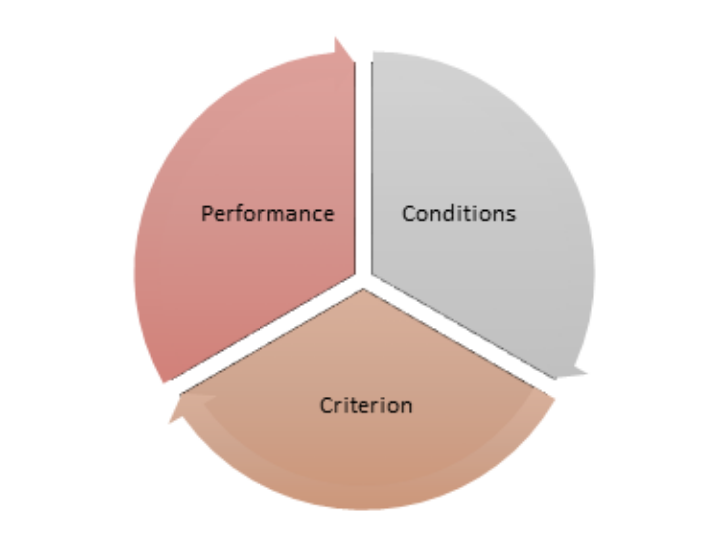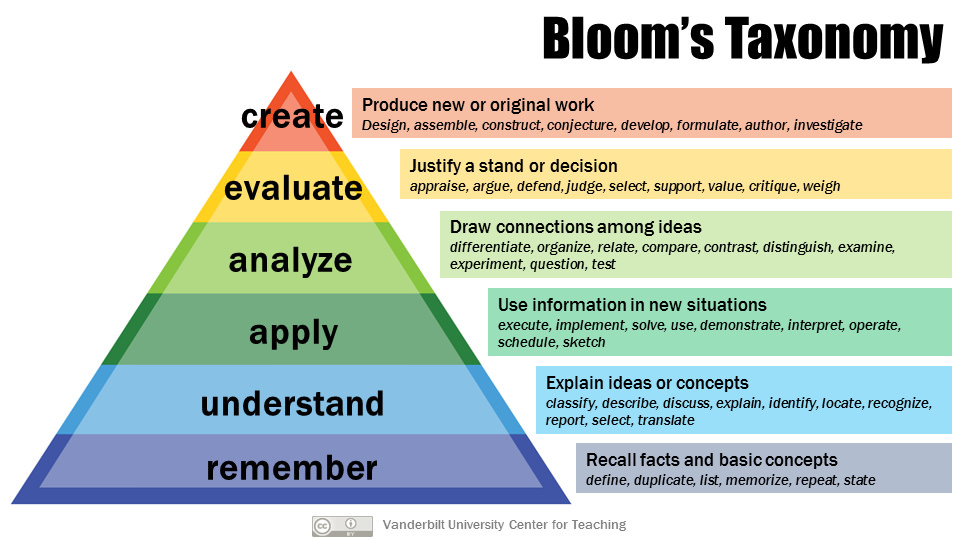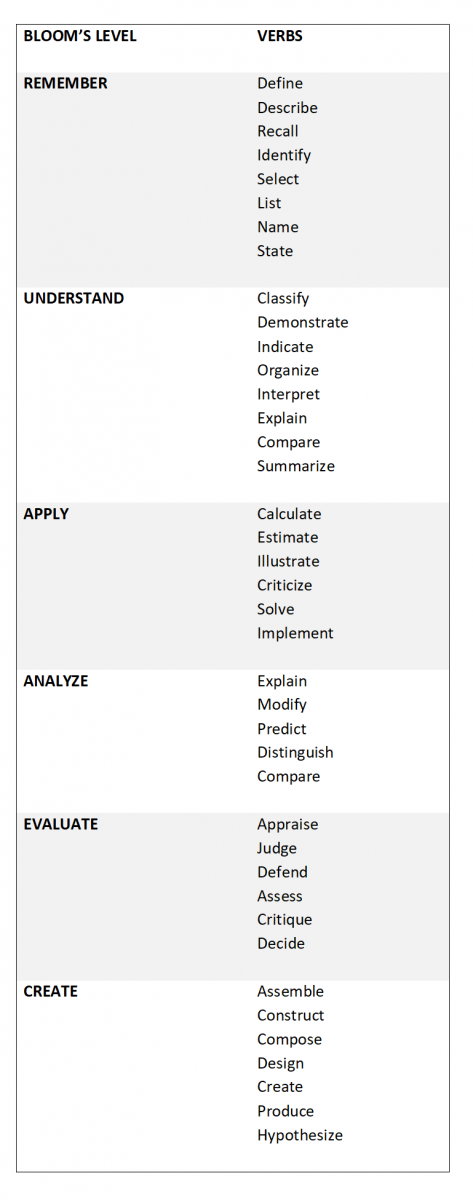
Figure: Performance, Conditions, Criterion
- The Performance component is a description of the behavior that learners are expected to perform. It should be measurable and observable.
- The Conditions component of an objective is a description of the circumstances under which the performance will be carried out.
- The Criterion is a way to measure an acceptable or adequate performance.
Example:
Given a list of values of a company’s assets and liabilities, students should be able to create a balance sheet within 80% of the correct asset values.
In this example:
-
Condition: Given a list of values of a company’s assets and liabilities
-
Performance: students should be able to create a balance sheet
-
Criterion: within 80% of the correct asset values
Using Bloom’s Taxonomy as a Framework for Writing Learning Objectives
The most important and challenging part of writing good learning objectives is defining observable behaviors that can be measured. For example, good learning objectives should not include the verb “understand,” as understanding is not observable and measurable. Bloom’s Taxonomy is a helpful framework that can help you choose observable and measurable verbs to create learning objectives in your course.
Bloom’s Taxonomy is a framework that defines six cognitive levels from lower- to higher-order thinking. The original levels published by Bloom et al. (1956) were ordered as follows: Knowledge, Comprehension, Application, Analysis, Synthesis, and Evaluation.

Figure: Original Version of Bloom’s Taxonomy
Anderson and Krathwohl (2001) published a revised version of Bloom’s Taxonomy which uses verbs for each level and focuses on active performance of the types of learning involved in each level of the hierarchy.

Figure: Anderson and Krathwol's (2001) revision to Bloom's Taxonomy
The following is a list of measurable action verbs based on Bloom’s Taxonomy that can be used when you are developing learning objectives for your course.

Figure: Measurable Action Verbs Based on Bloom’s Taxonomy
Supplemental Resources
Check out a list of Bloom’s Taxonomy action verbs to assist you in creating learning objectives.
The Learning Outcomes Generator designed by the University of Nevada, Reno walks you through the process of developing measurable learning outcome statements.
References
- Anderson, L. W., Krathwohl, D. R., Airasian, P. W., Mayer, R. W., Pintrich, P. R., Raths, J., & Wittrock, M. C. (2001). A taxonomy for learning teaching and assessing. (Complete ed.). New York: Longman.
- Armstrong, P. (n.d.). Bloom’s Taxonomy. Vanderbilt University. https://cft.vanderbilt.edu/guides-sub-pages/blooms-taxonomy/
- Bloom, B. S.; Engelhart, M. D.; Furst, E. J.; Hill, W. H.; & Krathwohl, D. R. (1956). Taxonomy of educational objectives: The classification of educational goals. Handbook I: Cognitive domain. New York: David McKay Company.
- Bloom’s Taxonomy. (2018, July 4). Centre for Teaching Excellence. https://uwaterloo.ca/centre-for-teaching-excellence/teaching-resources/teaching-tips/planning-courses-and-assignments/course-design/blooms-taxonomy
Experiencing an issue or need additional support?
Contact our OneIT Team by